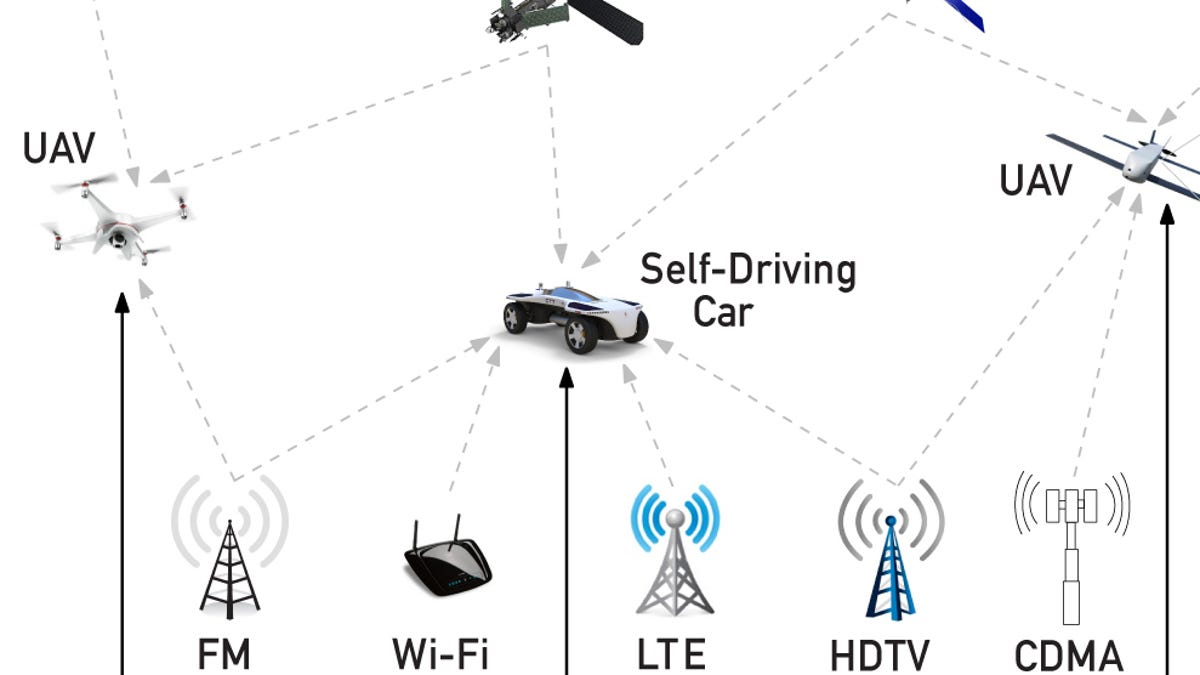Navigation system goes beyond GPS via Wi-Fi and other signals
The setup, for self-driving cars and drones among other things, takes advantage of the everyday signals and transmissions that already surround us.

In this illustration, a self-driving car and other autonomous vehicles tap various satellite signals -- as well as Wi-Fi and cellular and radio transmissions -- to locate themselves in space.
ASPIN Laboratory at UC RiversideCellular signals, TV transmissions, Wi-Fi.
What if you could take all that invisible detritus that's forever flying around our heads and harness it for something more than its intended purpose?
That's apparently what researchers at the University of California, Riverside, have done to create a navigation system that goes beyond the limitations of GPS.
Drones and self-driving cars could use the system to tap into cellular and other signals and locate themselves in space, the researchers said in a release posted Wednesday.
It could be used on its own or as a supplement to Global Positioning System signals, which, the researchers said, are susceptible to intentional and unintentional jamming and to hacking, and which can also drop out in certain environments.
At the moment, many navigation systems for autonomous vehicles buttress GPS signals with data from sensor-based technologies like sonar and lasers.
"By adding more and more sensors, researchers are throwing 'everything but the kitchen sink' to prepare autonomous vehicle navigation systems for the inevitable scenario that GPS signals become unavailable," team leader Zak Kassas said in the release. "We took a different approach, which is to exploit signals that are already out there in the environment."
The team showed off its research earlier this year at the 2016 Institute of Navigation Global Navigation Satellite System Conference. To navigate the technical details, you can check out a couple of studies: "Signals of Opportunity Aided Inertial Navigation" (PDF) and "Performance Characterization of Positioning in LTE Systems" (PDF).

